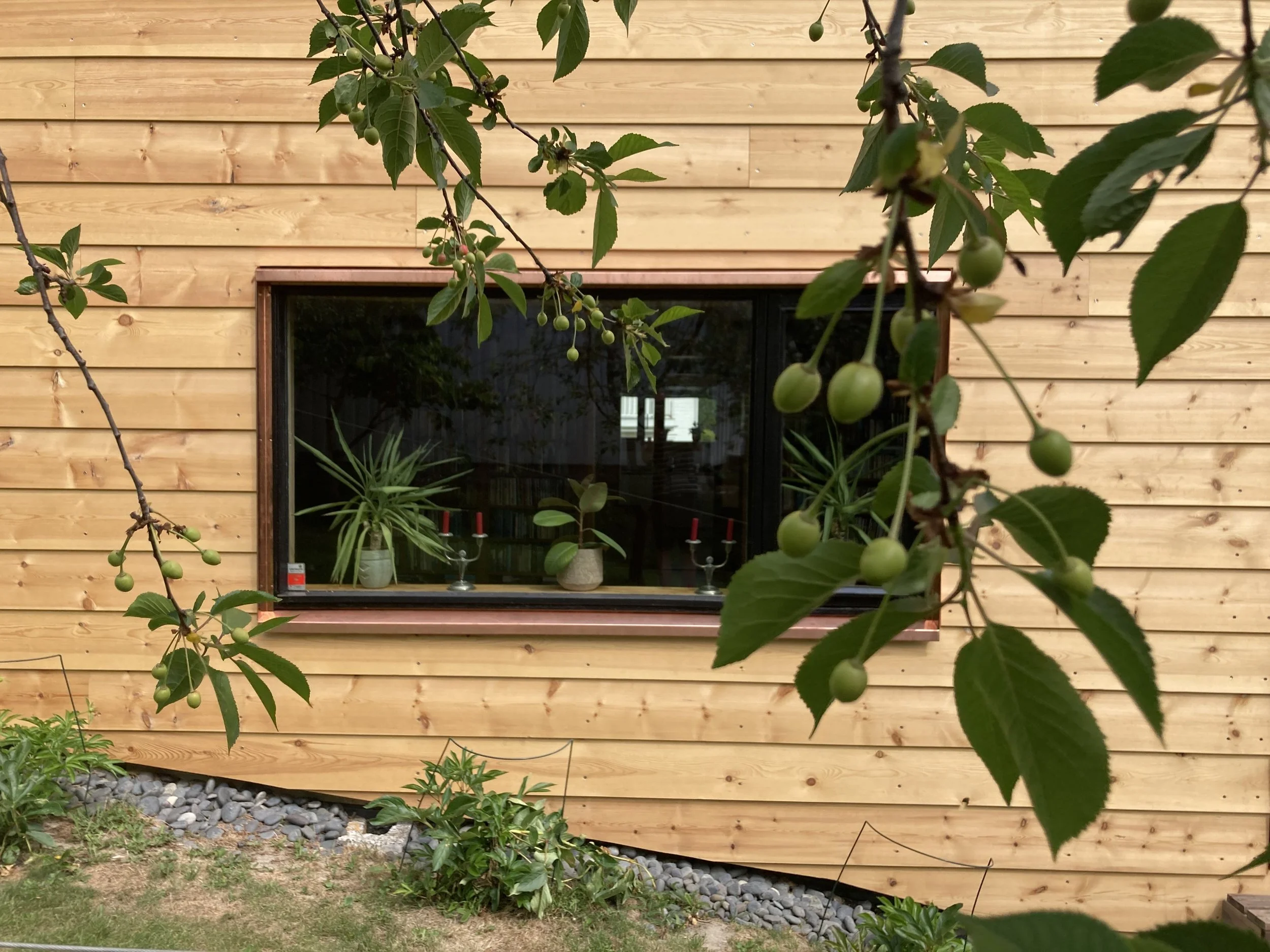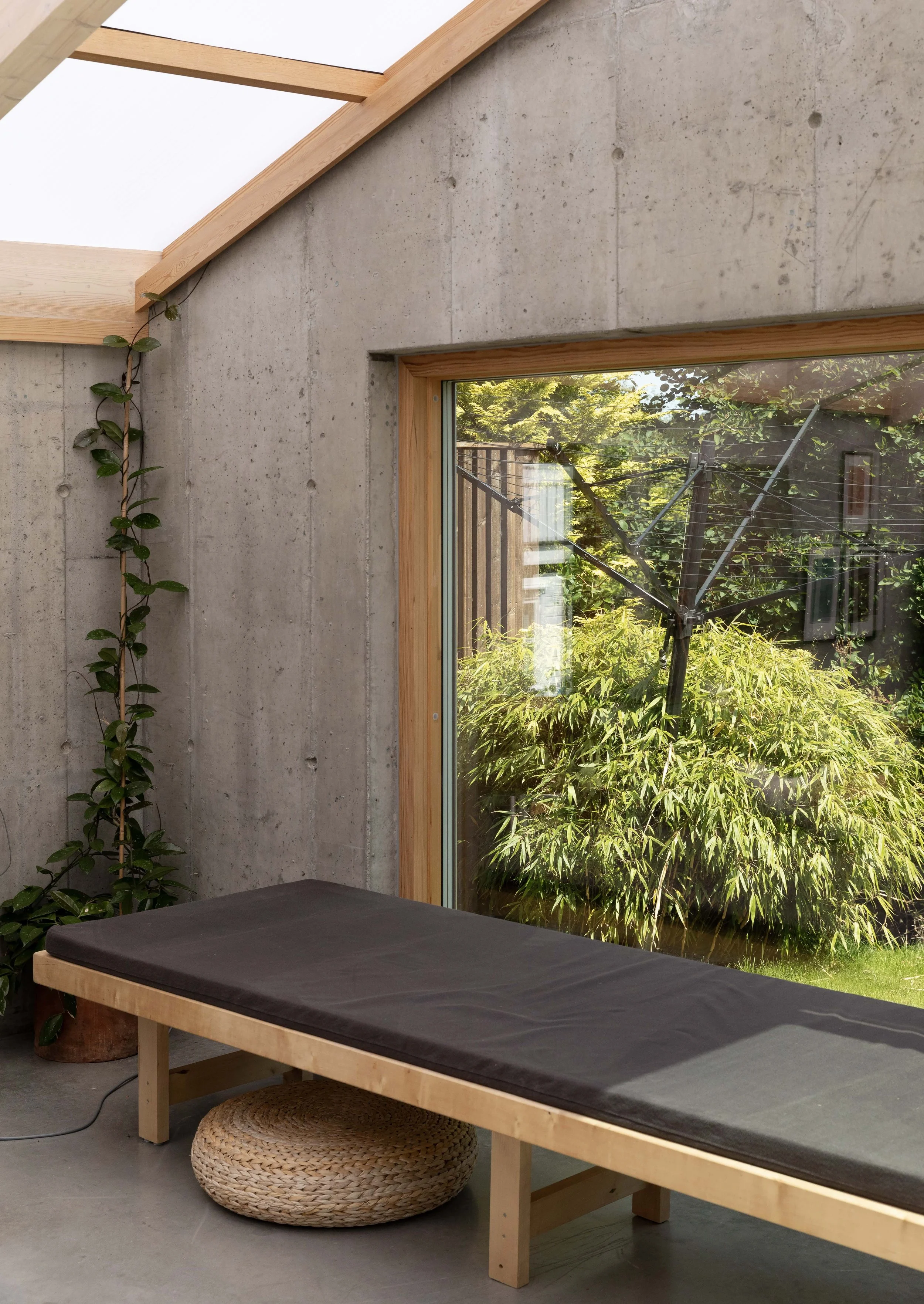CABIN DESCENDED/ FARSUND





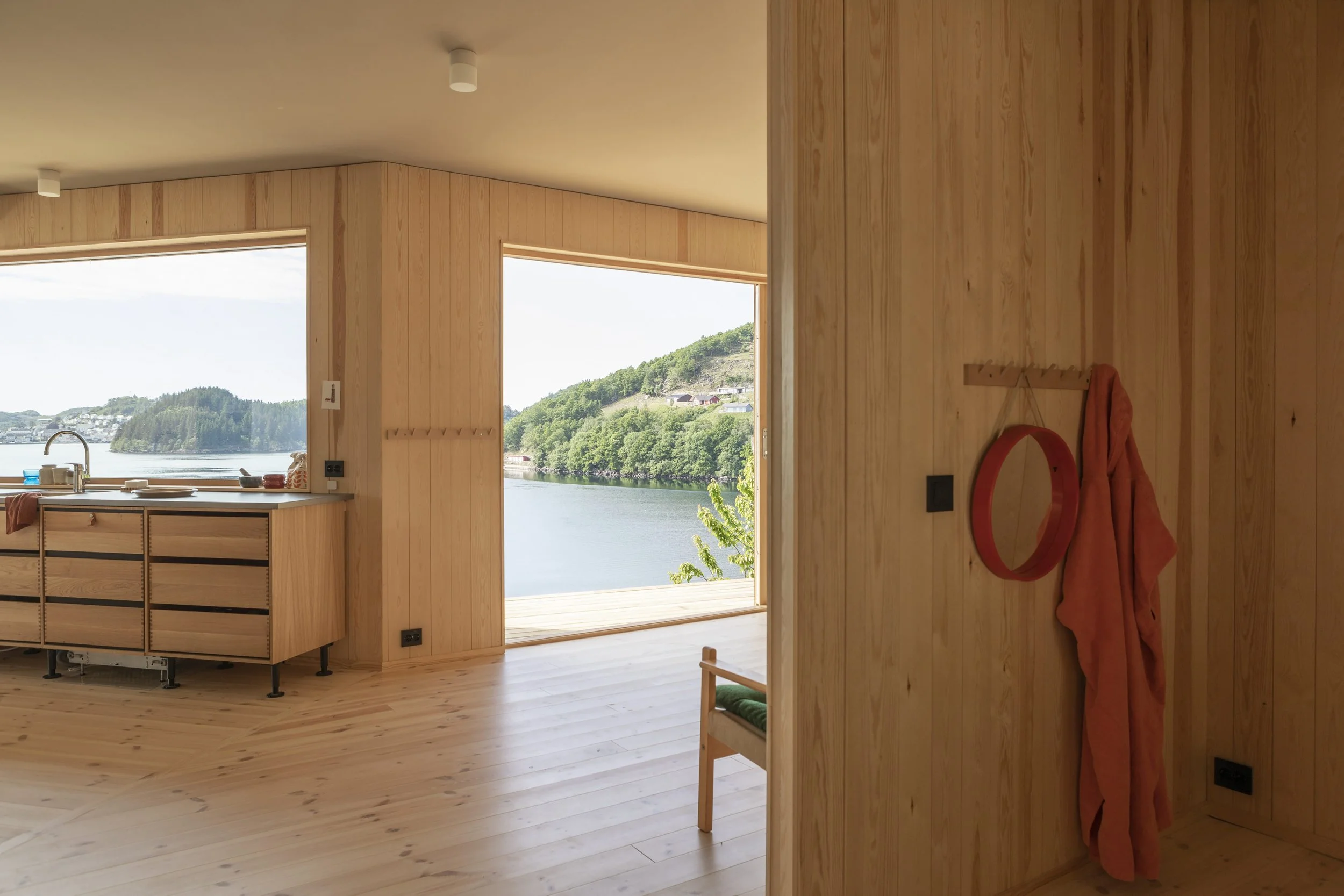

2022. New wooden cabin descending a steep hillside. The cabin adjusts the terrain and are planned in large steps inside.
SKYSSTASJON 1803/ JØLLESTØ
2022. Two small houses that become one cabin.
HOUSE WITH SMALL TOWER/ GYLAND
2022. Renovation of a 1960´s house. Ongoing project.
A HOUSE FOR A BED AND A HOUSE FOR A SHOWER/ SILLEVIKA
2021. Renovation of/ Addition to a cabin between dunes and trees, close to the sea.
BOATHOUSE AND SAUNA/ FEDA
2020. Sauna/ Firewood storage
HOUSE IN A SLOPE/ FLÅM
2019. Construction of a new cabin at Lista. The building is located close to the rough North sea, and is based upon the novel written by american nature writer Henry Beston in 1929, 'The Outermost House'. A chronicle of a solitary year spent on a Cape Cod beach, The Outermost House has long been recognized as a classic of American nature writing. Henry Beston had originally planned to spend just two weeks in his seaside home, but was so possessed by the mysterious beauty of his surroundings that he found he "could not go." Instead, he sat down to try and capture in words the wonders of the magical landscape he found himself in thrall to: the migrations of seabirds, the rhythms of the tide, the windblown dunes, and the scatter of stars in the changing summer sky. Beston argued that, "The world today is sick to its thin blood for the lack of elemental things, for fire before the hands, for water, for air, for the dear earth itself underfoot." Seventy-five years after they were first published, Beston's words are more true than ever.
Work in progress.
RESTORATION OF A BARN/ LISTEID
2018. 7 dwellings built for persons with both substance abuse and mental disorders.
The dwellings are all about making a secure and safe framework for the residents. Overview and control related to who enters and leaves the area are essential, both for the staff and the residents. On the outside of the facilities there are no doors or windows to open. The windows are constructed with unbreakable glass. The dwellings are built with very robust materials and all detailing and interior are vandal proof.The dwellings are small L-shaped houses with private gardens as part of a common courtyard. The concept is about tuning the transitions between the private, the semi-private, common areas, the semi-public and the public spheres.
The dwellings are organized with an open plan. The bathroom separates the sleeping and the living areas, and eliminates the need for interior doors (except to the bathroom). Windows are shaped and placed to give different characters to different areas. In the sleeping area there are low windows from the floor up, protecting the resident from being seen from the outside and making the room feel like a safe and gloomy cave. In the living area there are low window in seating height and another high-placed window to fetch more of the light from the sky. In addition to the 7 dwellings the facility consists of a common house with administration, kitchen, dining room and laundry room.
A STONE WALL MOVED-HOUSE/ FEDA
2018. Garden annex with detailing in concrete, oak, steel and glass.
BATHROOM/ SOGNDAL
2017. A large open space is framed by a two-sided trussed glassed wall. Qualities of daylight are given to the space during the hours of the day and the seasons of the year. The drama of the rain, of hunting birds and shifting shadows are among the daily rhythm of the room. Constructed of slowly growing pine and locally picked fieldstone. The building contains in addition to the observation room, a garage, a bathroom and a small loft reached by a ladder. The insulation used is compressed wooden fibres.
Nytt Rom No. 59, 2017
Interiørmagasinet No 5, 2019
X
2016. Located on a hill the summerhouse has a view to the sea and the surrounding forrest. With a central atrium the house hovering the cultural landscape between old oak trees. The plan is optimized in order to stress daylight qualities and the number of walls are therefore limited. The open space circles the atrium if future plan is to establish oak trees also here. All indoor surfaces are plywood of birch.
VILLA SEIM or HOUSE WITH THREE CLIMATE ROOMS/ FARSUND
2025. Single family house in brickwork. Work in progress.
MASK HOUSE/ LIER
2021. A new facade with a cladding of pine and copper were added as a new layer to the house originally designed by architects Inger Molne and Rolf Gerstlauer in Lier.
STUDIO APARTMENT/ GRØNLAND
2022. Shared boathouses that stresses the colors of the surrounding land.
ANNEX/ BORHAUGGARDEN
2019. Cabin located between pine trees.
Work in progress.
STUDIO STIV KULING ARCHITECTS/ JØLLESTØ
2019. A cabin for slinging honey. And for enjoying the sea view.
HOUSE/ SOGNDALSDALEN
2019. Woodworkshop and garden annex located between apple trees.
SAUNA WITH GRAVEL FLOOR/ SOGNDAL
2017. An additional kitchen annex gives shifting daylight qualities to the room. Custom made cabinets gives the identity to the space and contains kitchen devices, tomatoes and shadows. A tumbled white marble floor without joints gives a spatial dept and a makes a mineral floor feels soft. The Pinewood are self-cut from a family forrest.
Bonytt No. 3, 2018
NRK 2022 Arkitektens hjem
ATRIUM HOUSE/ VERE
2018. Single Family House.
HIDDEN CABIN/ DALTEN
2017. An addition to an exsisting single family house from 1955 and a garage. The builings are placed on a row on the hillside above Hafslo, and creates a tun on the upperside/entry side. The addition gives a new entry, staircase, two bath rooms, a sleeping room and a small living room with great view over Hafslo, the lake and the sorrounding mountains. The walls and ceiling in aspen, and staircase in maple. Green rubber floor, heartwood from pine for exterior cladding and copper detailing.
x
2015. Oak frames with rigid frame corners provided by galvanized steel plates. Twofolded sliding door giving a full opening to the garden.
Glas cladding.
GARDEN ANNEX WITH WORKSHOP
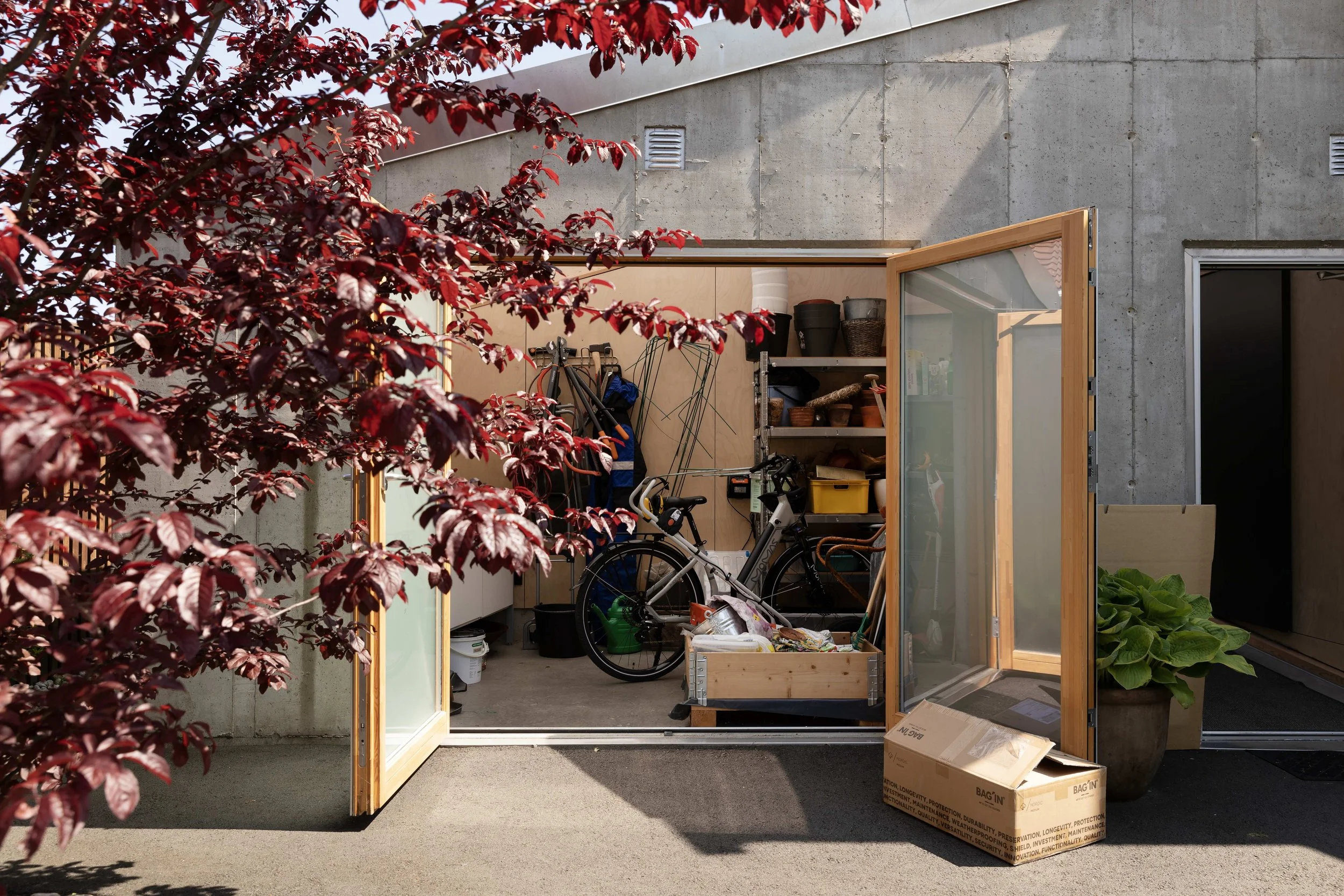
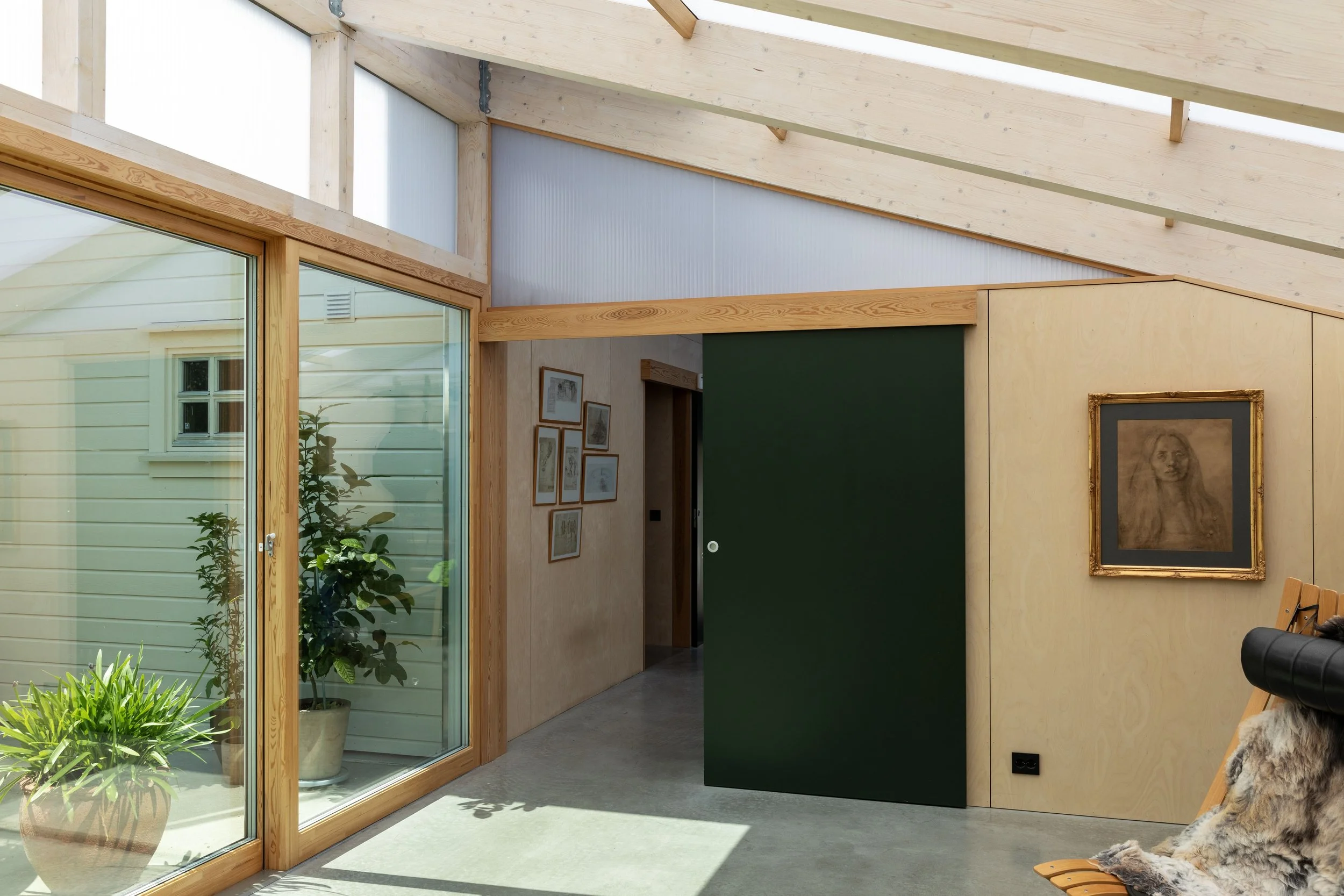


2019. Woodworkshop and garden annex located between apple trees.
X
2016. A house with a courtyard on the hillside of Sogndal. The shape of the house follows the terrain and take use of the height difference, avoiding high retaining walls. The courtyard provides sheltered spaces outdoors and indoors. Carefully placed windows frames in the landscape. The main materials in the interior are plywood and concrete. The exterior cladding is heartwood from pine.
X
2013. A carport in an atrium of a 1960s house. The narrow space required a transparent and light structure. The construction is in oiled oak with steel detailing.





